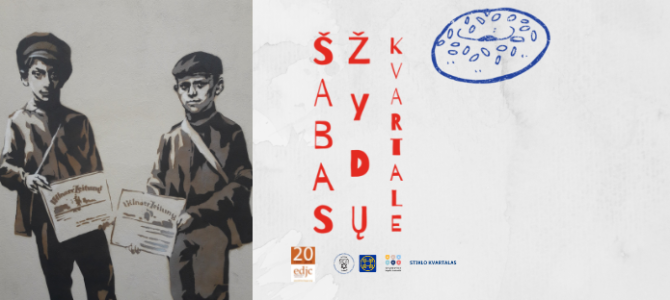As part of the 20th annual European Day of Jewish Culture, the Lithuanian Jewish Community invites the public to visit the former Jewish Quarter of Vilnius. Recently several frescoes appeared on the walls there. The creators will lead a tour and talk about their surprising project The Walls Remember on September 1. Project author Lina Šlipavičiutė-Černiauskienė describes it this way:
“Vilnius had one of the largest and most active Jewish communities in our region. The horrors of World War II almost completely destroyed this community and this is without doubt one of the most painful losses for Lithuania and especially Vilnius. We don’t have the right to forget these people, and we do not forget them.
“But we forget too much the time when the people of Vilnius were simply happy. These bright memories should be visible: how these people worked, grew up, created families and grew old… How they shaped their lives in Vilnius whose streets we walk today, the same town we the current inhabitants of Vilnius love.
“This is the concept of the #sienosprisimena project. It is like the meeting of two worlds existing in the same space but a separate time. The essence of the project is the resurrection of moments of interwar Vilnius Jewish life. On the same walls which still remember these people. Artists, religious people, merchants, children, parents–the people who lived their lives and enjoyed themselves in Vilnius.
“Authentic photographs from the Vilnius Jewish Quarter in the interwar period were used to implement the project, reinterpreting them artistically and placing them on the walls of the Vilnius Jewish Quarter.
“The Walls Remember project has several goals. First of all, the goal is to remind the public Vilnius had a large and prosperous Jewish community, of which we should be truly proud. At the same time, the project seeks to encourage great communication between the different social and ethnic groups in the city of Vilnius through a synthesis of historical scenes and modern art.
“The use of the technique of graffiti was chosen intentionally. It is a modern technique which blends well with street art, becoming part of city life. In this way the art project is acceptable to the contemporary individual and speaks perhaps in a more understandable way about history and an individual experience of it.”
Program in English: http://bit.ly/2ZiTU4G
Registration: http://bit.ly/31gobyc


